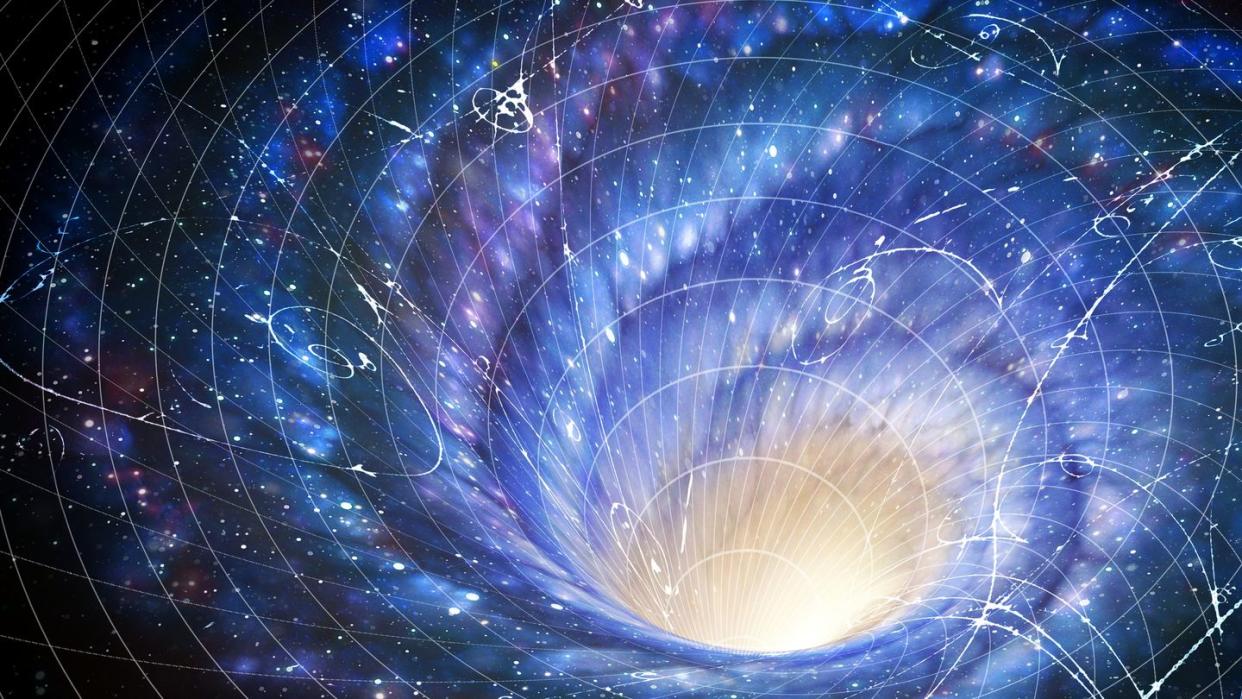Can ‘Wobbly Spacetime’ Answer Physics’ Biggest Question?

"Hearst Magazines and Yahoo may earn commission or revenue on some items through these links."
Although quantum mechanics and general relatively help explain the universe—at both small and cosmic scales—the two theories are fundamentally incompatible with each other.
This has spawn theories that attempt to bridge this scientific gap—string theory, loop quantum gravity, and now a new theory called the “postquantum theory of classical gravity.”
This theory challenges the idea that Einstein’s general theory of relativity needs to be “quantized” at all, and posits that the discrepancy between quantum mechanics and general relatively can instead be explained by unpredictable “wobbles” in spacetime.
Understanding the “how” of existence is justifiably difficult, but it’s a question that science has actually made some pretty good progress towards answering. First published in 1915, Albert Einstein’s General Theory of Relativity has long provided an incredible framework for understanding the complex machinations of the cosmos. And for the things that Einstein’s ideas can’t fully explain, quantum mechanics steps in to take the baton to the finish line.
There’s just one problem—the two theories are fundamentally incompatible with each other.
This has resulted in two leading “quantized” theories of general relativity—string theory and loop quantum gravity—that attempt to bridge the gap between these two worlds. But a new theory from Jonathan Oppenheim, a physicist at University College London (UCL), takes another approach. Oppenheim posits that spacetime isn’t quantum at all, but classical. The only differences, he claims, is that that spacetime “wobbles” randomly, rather than being uniform.
The theory is officially dubbed the “postquantum theory of classical gravity,” and scientists have been testing it for five years. On Monday of this week, two simultaneous papers detailing the theory were published by UCL scientists in the journals Physical Review X and Nature Communications.
“Quantum theory and Einstein’s theory of general relativity are mathematically incompatible with each other, so it’s important to understand how this contradiction is resolved,” Oppenheim said in a press statement. “Should spacetime be quantized, or should we modify quantum theory, or is it something else entirely?”
To test the theory, researcher Zach Weller-Davies devised an experiment to try and prove the theory false. Routinely measuring the same mass over time should show minute fluctuations, if Oppenheim’s approach is correct. However, if the fluctuations are not big enough to account for the quantum discrepancies, it’d likely prove the theory wrong.
“We have shown that if spacetime doesn’t have a quantum nature, then there must be random fluctuations in the curvature of spacetime which have a particular signature that can be verified experimentally,” Weller-Davies said in a press statement. “A delicate interplay must exist if quantum particles such as atoms are able to bend classical spacetime.”
The new theory has more than a few detractors—this “wobbliness” means a breakdown in predictability, which, as Oppenheim tells The Guardian, “many physicists don’t like.” Theoretical physicist Carlo Rovelli, an expert in loop quantum gravity, has friendly 5,000:1 odds that spacetime is described by quantum theory rather than classical. But even if “postquantum theory of classical gravity” seems like a long shot, exploring the possibility is what science is all about.
“Most speculations turn out to be wrong,” Rovelli told The Guardian. “I think it is good that Oppenheim explores this possibility, even if not very plausible.”
You Might Also Like

